2007 Lexus IS 300

| The Good: – First-class handling – First-class value – First-class build quality |
The Bad: – Economy-class ride – Economy-class rear space – Economy-class tech interface |
As we were flying down an off-ramp at 120 kays, we were wondering how far Lexus had come. Starting off from a not-so-humble beginning with a lumpy luxury cruiser under the LS badge, we couldn’t help but feel a little giddy as we piloted their latest zippy incarnation, which wears the new IS badge. After years of producing reliable alternatives to Mercedes-Benz, Lexus has finally branched out and given us a reliable substitute to a BMW. Or at least, what they think a BMW ought to be.
The Lexus IS 300’s sleek new exterior styling philosophy is certainly a step in the right direction. It is delightfully aggressive in person, with 17-inch wheels and dual exhaust tips, but it is one of those designs which unfortunately look bloated in photos. It is unique enough for many young bystanders to turn around with interest, but it is equally anonymous enough for taxi drivers to disrespectfully honk at you, even when you are rolling in a Lexus. The build quality is flawless as expected, and this favourable trait continues within the interior as well.
The cabin oozes class and quality, and there are no obvious signs of cost-cutting so evident in some entry-level luxury cars from Cadillac and Infiniti. The seats, doors and armrests are all lined with smooth leather, while the dashboard and door sills are lined in a semi-hard black material which we would’ve preferred to be a little softer. Bits and pieces are dressed in either wood or metal in the tan cabin of our tester, while superior plastics build up the rest. The navigation computer screen is nicely integrated and within reach, as are all buttons and switches, although some of these buttons are not lit at night. Nice touches include door pockets that pop outwards as needed, with space for a bottle, damped roof handles that come out in a unique way, and sculptured inner door pulls that wouldn’t be out of place in a museum. There is only one proper central cup-holder in the front however, when there could’ve been more.
Lounging in the cabin, the front is the place to be in, with muscular bolstered seats, ventilated and power-operated, while convenient electrically-operated items include an adjustable steering column, rear sunshade and sunroof. Headroom, legroom and life are all good in general for the front passengers. On the other hand, life turns to hell for the rear passengers, with knee-bumping legroom and an inch to spare above their heads. This is due to the inconsiderately thick front seats and the swooping roof. Suitcases seem to have been given priority over the poor souls in the back, as the luggage trunk goes rather deep and is fairly useful in size, even though the trunk opening is very small.
The IS 300 has all the usual gadgets available that make a proper luxury car, though only the top model benefits from many of these optional toys. Apart from the HID headlights, keyless entry and start, front-side airbags and rear a/c vents, there is the obligatory navigation system that utilizes a touchscreen rather than some stupid joystick, and this screen also controls the solid CD/MP3 stereo and the strong a/c. There is also Bluetooth support to turn the car into a big hands-free phone. And there is the usual set of parking sensors, complimented by a rear-mounted camera. All this would be bliss except for the fact that we couldn’t get used to any of them on our short two-day test. The navigation system seemed to be stuck in screen settings we could not get out of, and the system refused to accept voice commands. The Bluetooth system also refused to detect any of our phones so we never got it to work. Also, one look behind while reversing will make it obvious why a rear camera is necessary, because the big rear headrests are largely blocking the view out the tiny rear window. The camera also has an annoying fish-eye view that distorts the scenery and adds to the confusion. One could probably find ways around all this by just reading the thick instruction manual, but we weren’t about to spend a day reading about how to operate a car that we had to return the next day.
Getting down to business, the IS 300 is all about the drive. The 3.0-litre V6 powerplant is a creamy mixture of 228 hp at 6200 rpm and 300 Nm at 4400 rpm, so smooth that it might as well use milk for engine oil. Admittedly, the power isn’t enough to write songs about, but it is very adequate for quick driving and responds immediately to throttle inputs. The IS 300 will fall behind in any straight-line jaunt against the BMW 330i, but it is one of the few cars we’ve tested that actually matches its advertised 0-to-100 kph time, and does well against the BMW 325i, with a time of 7.7 seconds. The 3.0-litre V6 gave us 12.9 litres per 100 km, which is remarkably similar to what we got with the 3.5-litre in the heavier ES 350. The six-speed automatic shifts smoothly and quickly, but we forgot to try out the plastic shifter paddles behind the steering wheel, possibly distracted by the stubborn navigation system.
Comparisons with BMW were inevitable, and the little Lexus holds its own in the handling department. It had no discernible body roll as we confidently pushed into curves at speeds above 100 kph. Grip from the 225/45 tyres wrapping the 17-inch wheels was phenomenal, almost as good as the pricey BMW 330i, but fell short near the limit since the Bimmer actually has much wider tyres in the back. The Japanese car’s stiff suspension doesn’t seem to take very sharp corners as well as the BMW either, as it hops slightly on mid-corner bumps, which is easily controllable with the delightfully firm and responsive steering. The intrusive stability control kicks in once a slide is initiated. A powerslide can be started with some steering and throttle work, but not finished, as the electronic ESP nannies reduce power and seems to do some braking to slow down the car. While it is commendable that the ESP system doesn’t totally bring the car to a crawl, these high-tech intrusions cannot be turned off. Only the traction control can be switched off for a decent launch, but not much is possible in the corners, as the car doesn’t even have a proper handbrake to force a controlled slide, and the foot-operated parking brake is of no use except for, well, parking. The BMW 3-Series allows much more enthusiastic driving, with a prominent ESP kill switch and a handbrake too.
Out on the open highway, the IS 300 is quiet up to 100 kph, and the engine always sounds muted no matter what the speed. The car picks up speed well, racing from 100 kph to 180 kph smoothly without any compromise in stability, but wind rush picks up to very noticeable levels with the increase in velocity. But more noticeable is the mildly harsh ride, especially on uneven pavement. It seems Lexus gave up their trademark soft ride for suspension tuning that is decidedly sporting, but they could not find the supernatural balance that makes BMW so popular. The ABS-assisted four-wheel disc brakes are superb, as they traditionally are in all Lexus cars, but the sporty IS has better pedal feel and linear performance than its siblings, such as the ES.
The IS 300 is the most fun Lexus has ever offered, with traits befitting a true driver’s car. It also represents better value than a comparable BMW, with gadgetry that’d cost much more in its German rival. However, there are numerous trivial lapses which add up to a list of issues that BMW already seems to have fully addressed with their latest 3-Series. In terms of reliability, we’d pick the Japanese Lexus any day over a temperamental German, but Lexus still has some way to go before it can claim the enthusiast crown from BMW.

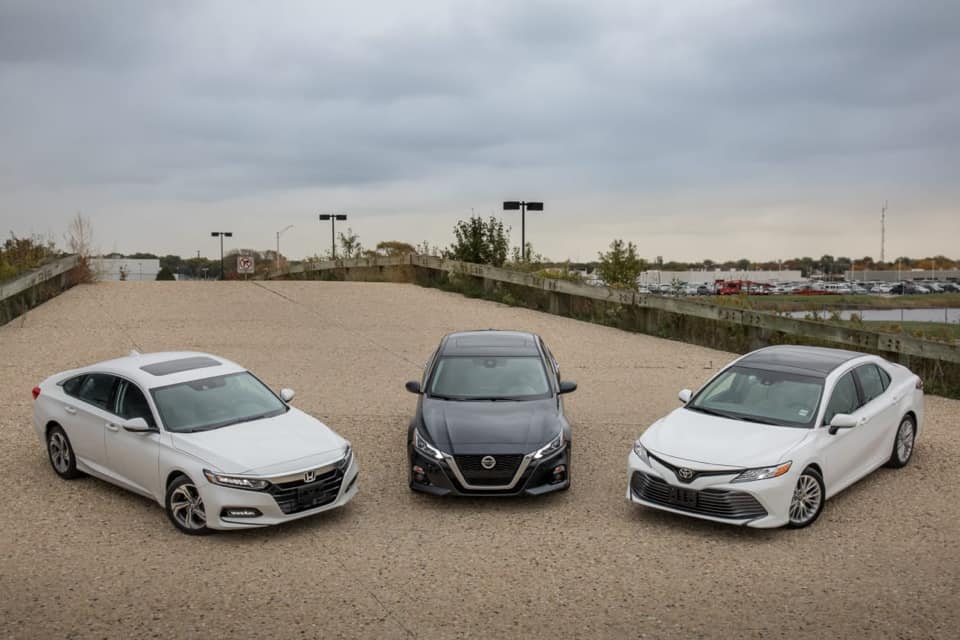
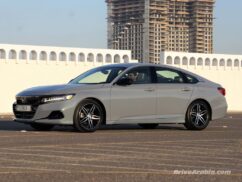
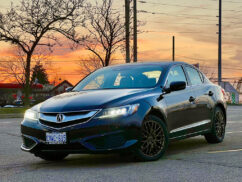
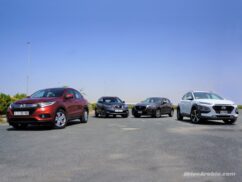
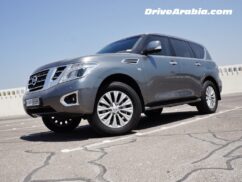
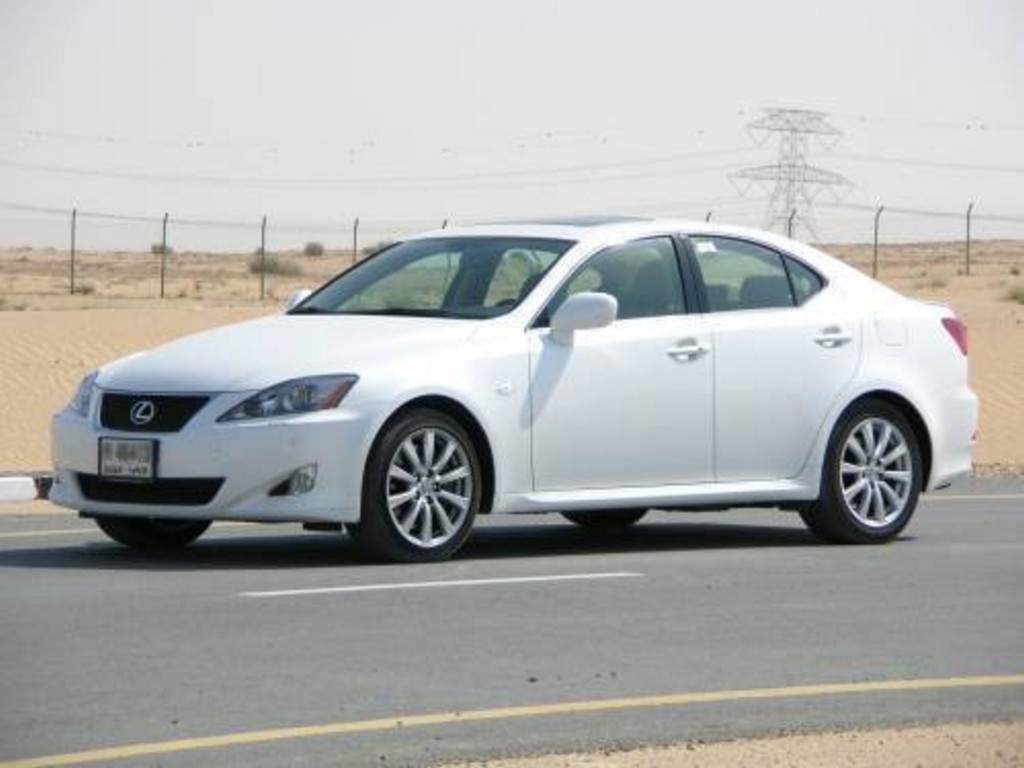
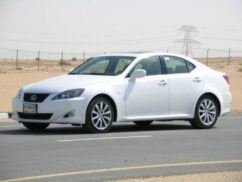
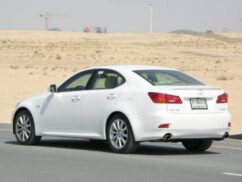
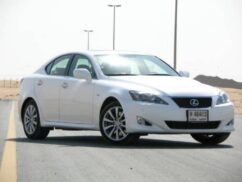
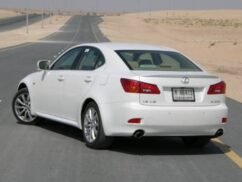
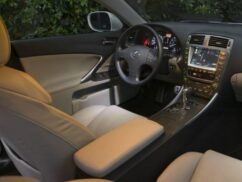
There are no comments. Be the first!